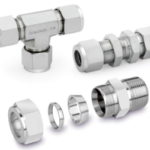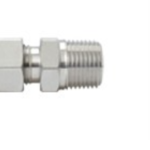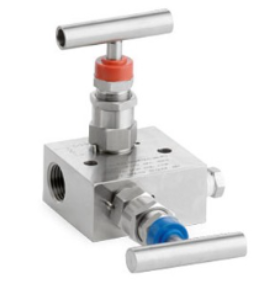
Instrumentation Fittings Unveiled: Key Components in Industrial Applications
December 11, 2023
SS Tube Fittings: Find Your Perfect Fit & Size
February 26, 2024Introduction:
Have you ever given any thought to the silent orchestra of valves that continuously operate in the background of our everyday existence? Manifold Valves regulate the flow, pressure, and direction of numerous fluids in a variety of industries, from the coffee brewing in your kitchen to the life-saving fluids flowing through medical equipment. Their significance is sometimes overlooked, yet they play a critical role in controlling these fluids.
Consider a manifold valve to be a conductor that skillfully controls several fluid streams via a network of connected channels. But unlike a conductor, their work goes unseen because complex technology and intricate systems hide it. Today, we shine a light on these unsung heroes and examine their significance through case studies from a variety of real-world sectors.
What are the types of manifold valves?
Let’s clarify the myths around the various kinds of manifold valves before moving on to particular applications. Ball valves provide dependable on/off control because of their straightforward revolving ball mechanism. Electronically operated solenoid valves provide for exact flow control. Check valves guarantee that fluids flow in the intended direction by serving as one-way doors. These are but a few instances; each category has special features tailored to certain needs.
However, what makes a manifold valve superior to a single valve? Consider a sophisticated system that needs several valves to regulate various fluid streams. A single manifold valve can be used in their place to simplify the setup, save room, simplify operations, and increase efficiency. It’s like combining the entire symphony into one exquisitely crafted instrument.
Examining the cases: Functioning of Manifold Valves
Now, let’s witness the power of manifold valves in action:
Case Study 1: The Heartbeat of Medical Equipment
Imagine dialysis equipment that can save lives. Here, it’s critical to carefully manage fluids like dialysate and sterile water. Manifold Valves are introduced, carefully regulating these essential fluids to guarantee patient safety and treatment effectiveness. Their small size reduces the amount of space inside the machine, and their dependable operation ensures patient safety.
Can you imagine what may happen to medical equipment if a manifold valve malfunctions?
Case Study 2: Fueling Automotive Innovation
The fluids of a contemporary car—fuel, coolant, and lubricants—are like a symphony. Manifold valves play this symphony, regulating their flow and pressure to optimize engine and fuel efficiency. They are essential in directing coolant for controlling battery temperature in hybrid and electric cars, which results in longer battery life and greater range.
What potential effects can future developments in valve technology have on the creation of electric vehicles?
Case Study 3: From Farm to Fork: Food Processing Precision
Consider a food production facility where materials such as oils, sauces, and milk require exact distribution and control. Manifold valves preserve product quality and guard against contamination by ensuring appropriate mixing, filling, and packing. They are invaluable in this field due to their proficiency with sticky liquids.
How can advancements in manifold valve design minimize food waste in processing plants?
Case Study 4: Chemical Reactions, Precisely Controlled
Chemical plants use a variety of fluids in complex reactions. Here, manifold valves serve as watchful sentinels, guaranteeing precise pressure and flow for secure and effective reactions. They are essential for preserving process integrity and safety because of their capacity to handle a variety of temperatures and severe chemicals.
In chemical processes, how can unique valve materials improve sustainability and safety?
The Broader Impact: Beyond the Case Studies
The influence of manifold valves extends far beyond these specific examples. They contribute to:
- Increased Efficiency: Reduced energy consumption and streamlined processes across industries.
- Enhanced Sustainability: Minimized waste and optimized resource utilization.
- Boosted Innovation: Enabling new technologies and applications across various sectors.
Manifold Valves capacities will grow as technology does. Consider valves that have sensors integrated into them to provide data on fluid pressure and flow in real time. or valves that, in response to changing circumstances, self-adjust to maximize performance and minimize failures. These developments have the potential to completely transform a wide range of industries, including aerospace and healthcare.
Conclusion:
Manifold valves may operate silently, but their impact is undeniable. They are the quiet conductors directing the flow of life-saving fluids in medical equipment, ensuring optimal performance in vehicles, maintaining food quality on our plates, and safeguarding complex reactions in chemical plants. As we strive for increased efficiency, sustainability, and innovation across industries, let’s acknowledge these tireless heroes and the vital role they play in shaping our world.
What are your thoughts on the importance of manifold valves in diverse industries? Do you have any personal experiences where these valves have played a crucial role?
Bonus:
- Did you know? The largest manifold valve ever built weighs over 180 tons and stands taller than a five-story building!
- Explore further: Learn more about different types of manifold valves and their specific applications on






